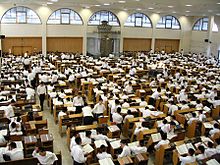
Hasidism, sometimes spelled Chassidism, and also known as Hasidic Judaism, is a religious movement within Judaism that arose as a spiritual revival movement in the territory of contemporary Western Ukraine during the 18th century, and spread rapidly throughout Eastern Europe. Today, most of those affiliated with the movement, known as hassidim, reside in Israel and in the United States.

A Rebbe or Admor is the spiritual leader in the Hasidic movement, and the personalities of its dynasties. The titles of Rebbe and Admor, which used to be a general honor title even before the beginning of the movement, became, over time, almost exclusively identified with its Tzaddikim.
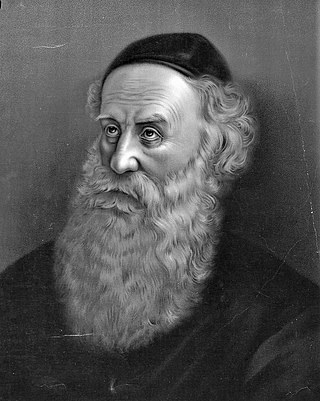
Shneur Zalman of Liadi was a rabbi and the founder and first Rebbe of Chabad, a branch of Hasidic Judaism. He wrote many works, and is best known for Shulchan Aruch HaRav, Tanya, and his Siddur Torah Or compiled according to the Nusach Ari.

Dov Ber ben Avraham of Mezeritch, also known as the Maggid of Mezeritch or Mezeritcher Maggid, was a disciple of Rabbi Israel ben Eliezer, the founder of Hasidic Judaism, and was chosen as his successor to lead the early movement. Dov Ber is regarded as the first systematic exponent of the mystical philosophy underlying the teachings of the Baal Shem Tov, and through his teaching and leadership, the main architect of the movement. He established his base in Mezhirichi, which moved the centre of Hasidism from Medzhybizh, where he focused his attention on raising a close circle of disciples to spread the movement. After his death the third generation of leadership took their different interpretations and disseminated across appointed regions of Eastern Europe, rapidly spreading Hasidism beyond Ukraine, to Poland, Galicia and Russia.

The Tanya is an early work of Hasidic philosophy, by Rabbi Shneur Zalman of Liadi, the founder of Chabad Hasidism, first published in 1796. Its formal title is Likkutei Amarim, but is more commonly known by its first Hebrew word tanya, which means "it has been taught", where he refers to a baraita section in "Niddah", at the end of chapter 3, 30b. Tanya is composed of five sections that define Hasidic mystical psychology and theology as a handbook for daily spiritual life in Jewish observance.
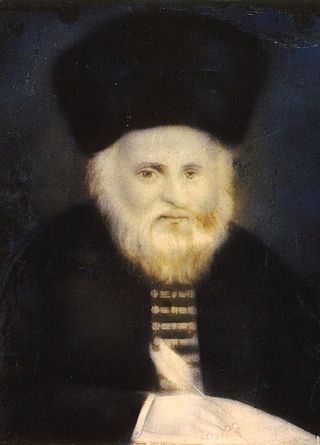
Elijah ben Solomon Zalman,, also known as the Vilna Gaon or Elijah of Vilna, or by his Hebrew acronym Gra, was a Lithuanian Jewish Talmudist, halakhist, kabbalist, and the foremost leader of misnagdic (non-hasidic) Jewry of the past few centuries. He is commonly referred to in Hebrew as ha-Gaon mi-Vilna, "the genius from Vilnius".
Neo-Hasidism, Neochassidut, or Neo-Chassidus, is an approach to Judaism in which people learn beliefs and practices of Hasidic Judaism, and incorporate it into their own lives or prayer communities, yet without formally joining a Hasidic group. Over the 20th century neo-Hasidism was popularized by the works of writers such as Hillel Zeitlin, Martin Buber, Abraham Joshua Heschel, Lawrence Kushner, Zalman Schachter-Shalomi, and Arthur Green.
The Dardaim or Dor Daim, are adherents of the Dor Deah movement in Orthodox Judaism. That movement took its name in 1912 in Yemen under Rabbi Yiḥyah Qafiḥ, and had its own network of synagogues and schools, although, in actuality, the movement existed long before that name had been coined for it. According to ethnographer and historian, Shelomo Dov Goitein, author and historiographer, Hayyim Habshush had been a member of this movement before it had been given the name Dor Deah, writing, “...He and his friends, partly under European influence, but driven mainly by developments among the Yemenite Jews themselves, formed a group who ardently opposed all those forces of mysticism, superstition and fatalism which were then so prevalent in the country and strove for exact knowledge and independent thought, and the application of both to life.” It was only some years later, when Rabbi Yihya Qafih became the headmaster of the new Jewish school in Sana'a built by the Ottoman Turks and where he wanted to introduce a new curriculum in the school whereby boys would also learn arithmetic and the rudiments of the Arabic and Turkish languages that Rabbi Yihya Yitzhak Halevi gave to Rabbi Qafih's movement the name Daradʻah, a word which is an Arabic broken plural made-up of the Hebrew words Dör Deʻoh, and which means "Generation of Knowledge."

Litvaks or Lita'im are Jews with roots in the territory of the former Grand Duchy of Lithuania. The term is sometimes used to cover all Haredi Jews who follow an Ashkenazi, non-Hasidic style of life and learning, whatever their ethnic background. The area where Litvaks lived is referred to in Yiddish as ליטע Lite, hence the Hebrew term Lita'im (לִיטָאִים).
Chaim of Volozhin was a rabbi, Talmudist, and ethicist. Popularly known as "Reb Chaim Volozhiner" or simply as "Reb Chaim", he was born in Volozhin when it was a part of the Polish–Lithuanian Commonwealth. He died there while it was under the control of the Russian Empire.
Schisms among the Jews are cultural as well as religious. They have happened as a product of historical accident, geography, and theology.
A nigun or niggun is a form of Jewish religious song or tune sung by groups. It is vocal music, often with repetitive sounds such as "Bim-Bim-Bam", "Lai-Lai-Lai", "Yai-Yai-Yai" or "Ai-Ai-Ai" instead of formal lyrics. Sometimes, Bible verses or quotes from other classical Jewish texts are sung repetitively to form a nigun. Some nigunim are sung as prayers of lament, while others may be joyous or victorious.
Hasidic philosophy or Hasidism, alternatively transliterated as Hasidut or Chassidus, consists of the teachings of the Hasidic movement, which are the teachings of the Hasidic rebbes, often in the form of commentary on the Torah and Kabbalah. Hasidism deals with a range of spiritual concepts such as God, the soul, and the Torah, dealing with esoteric matters but often making them understandable, applicable and finding practical expressions.
Lurianic Kabbalah is a school of kabbalah named after Isaac Luria (1534–1572), the Jewish rabbi who developed it. Lurianic Kabbalah gave a seminal new account of Kabbalistic thought that its followers synthesised with, and read into, the earlier Kabbalah of the Zohar that had disseminated in Medieval circles.
Israel ben Eliezer or Yisroel ben Eliezer, known as the Baal Shem Tov or as the BeShT, was a Jewish mystic and healer who is regarded as the founder of Hasidic Judaism. "Besht" is the acronym for Baal Shem Tov, which means "Master of the Good Name," a term for a holy man who wields the secret name of God.
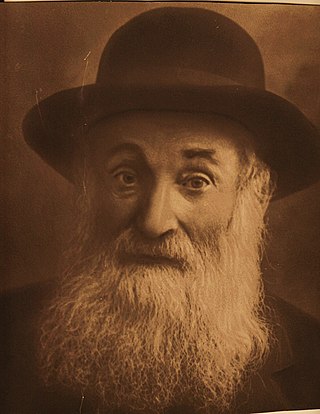
Pinchas HaKohen Lintup or Pinhas HaKohen Lintop was a Religious Zionist Lithuanian rabbi and teacher who served as the spiritual leader of the Hasidic community of Biržai.
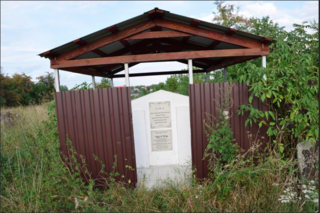
Chaim Chaykl (Chaika) Levin of Amdur, also known as the Amdurer Rebbe, was an 18th-century Hasidic rebbe and author who is amongst the earliest founders of Lithuanian Hasidism. A leading disciple of Dov Ber of Mezeritch, in 1773 he founded the Amdur Hasidic dynasty in Indura, Belarus where he faced fierce opposition from local Misnagdim. Despite this, Chaim Chaykl would go on to lay the foundation for several important Hasidic principles. His Divrei Torah was posthumously published in 1891 in Warsaw under the title "Chaim V'Chesed", which is now an important Hasidic work.

Hasidic Judaism in Lithuania is the history of Hasidic Judaism and Hasidic philosophy in Lithuania and parts of modern-day Belarus. Hasidic Judaism in Lithuania began with R. Aaron Perlow of Karlin (Karalin) (1736–1772), R. Menachem Mendel of Vitebsk (1730?–1788) R. Shneur Zalman of Liadi (Lyady) (1745–1812) and to a lesser extent R. Hayim Haykl of Amdur (Indura), all of whom were disciples of R. Dov Ber of Mezeritch (Mezhirichi), who in part was the successor to the R. Israel Baal Shem Tov who founded Hasidic Judaism in Western Ukraine. In its earliest years, Lithuanian Hasidism suffered immense persecution by the Lithuanian Misnagdic rabbinate, who attempted to ban and excommunicate Hasidism on several occasions in Lithuania beginning with R. Elijah b. Solomon Zalman of Vilna (1720–1797), who was the earliest disseminator of anti-Hasidic thought which flourished in Lithuania.

This article presents the timeline of selected events concerning the history of the Jews in Lithuania and Belarus from the fourteenth century when the region was ruled by the Grand Duchy of Lithuania.


